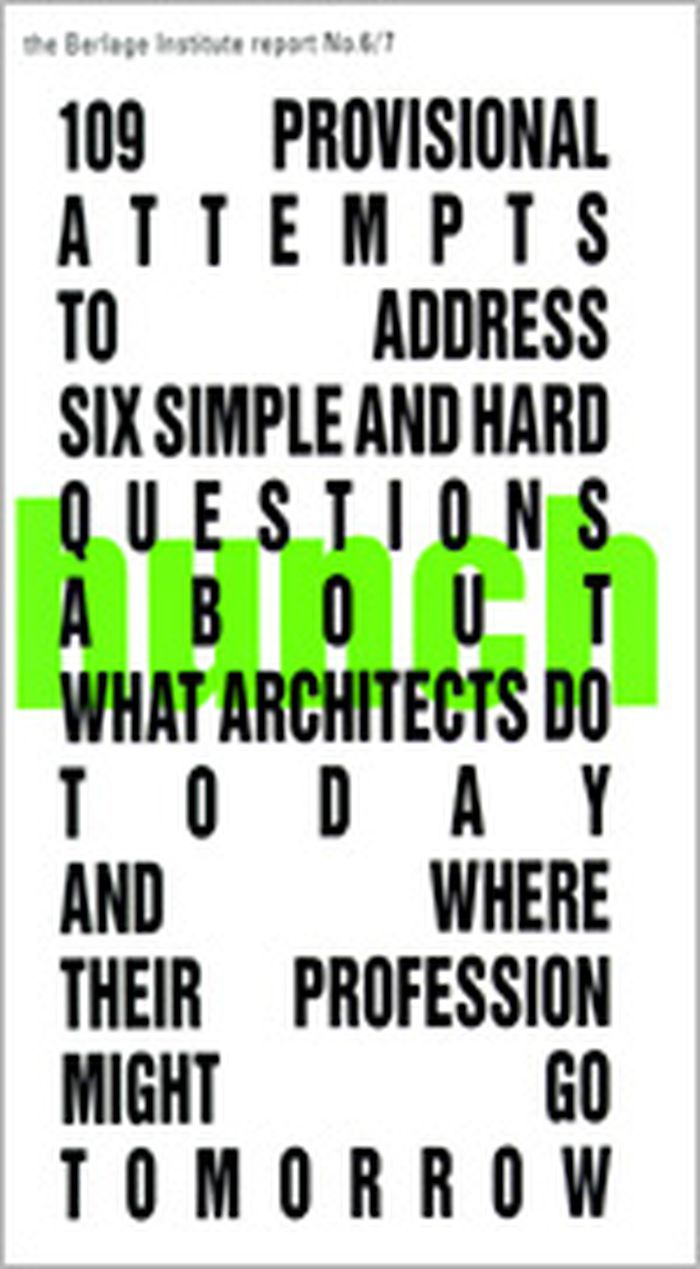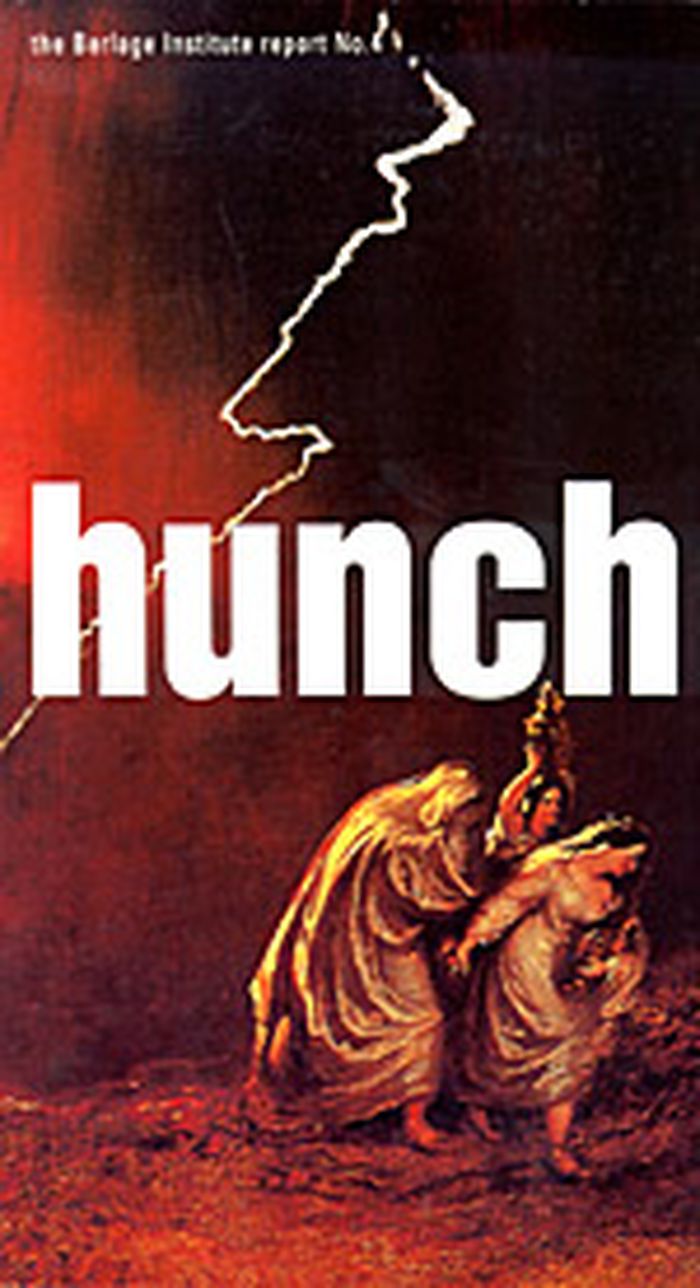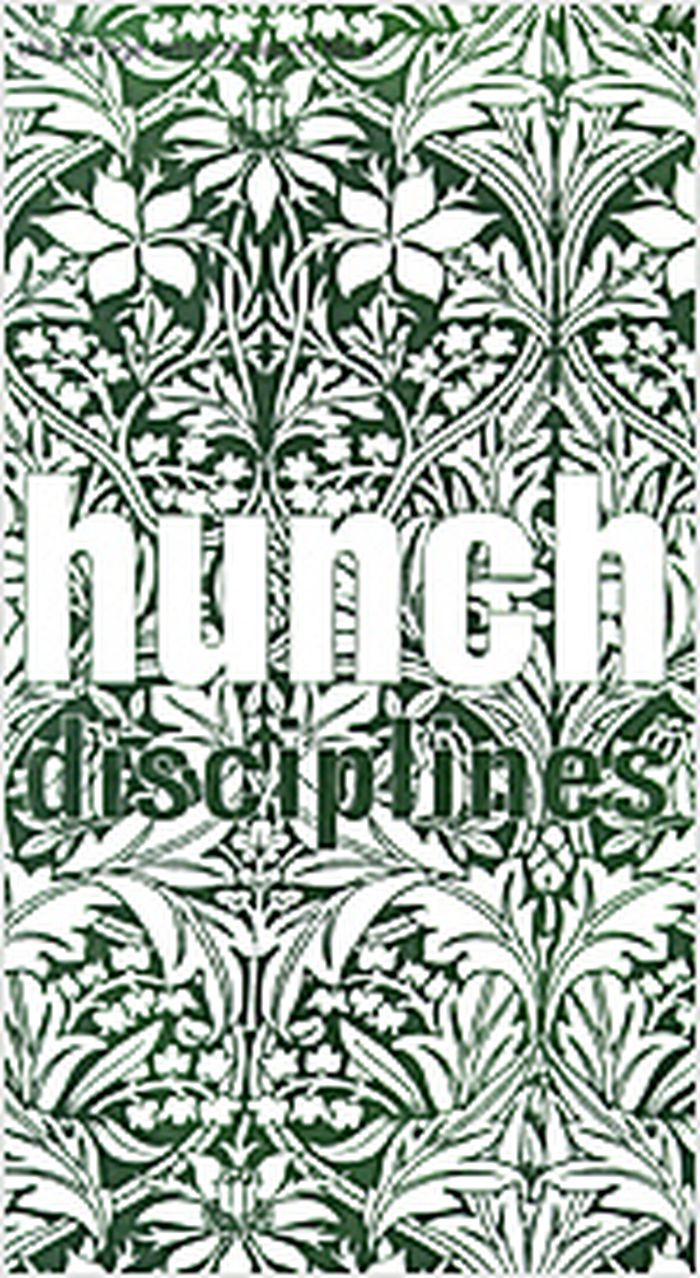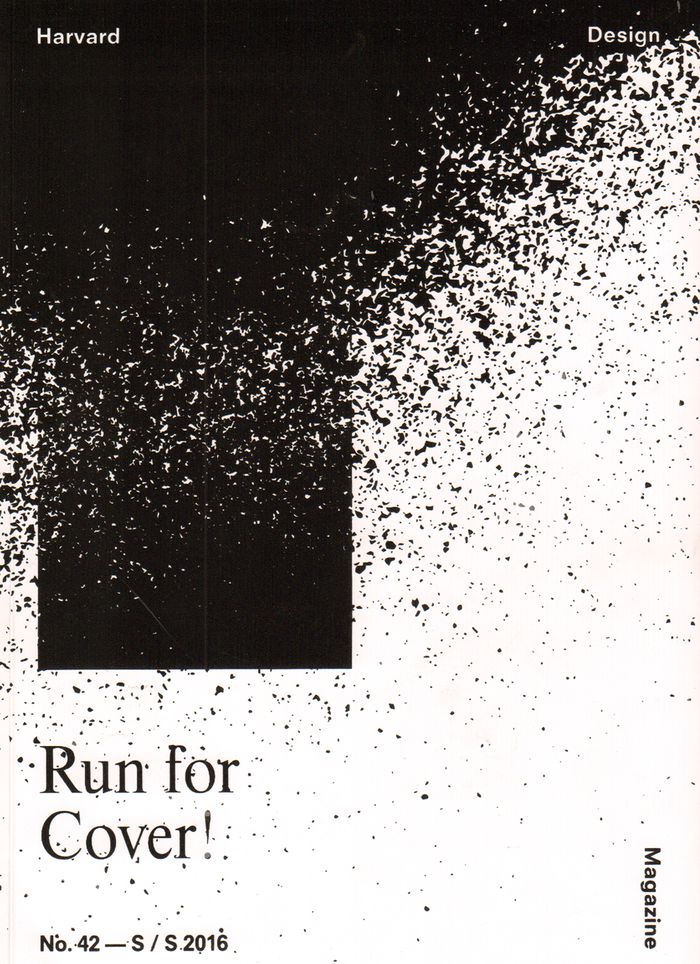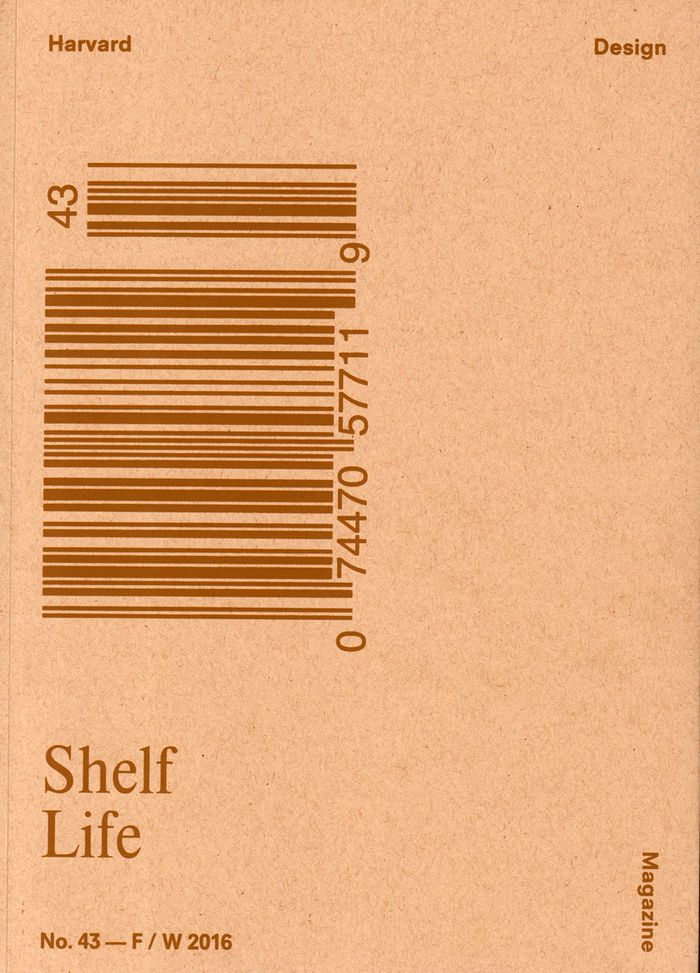$49.95
(available to order)
Summary:
This double issue of "Hunch" celebrates the first decade of the Berlage Institute, the farewell of Wiel Arets, and the welcome of Alejandro Zaera-Polo as new dean in the academic year 2002-2003. With 109 provional attempts to address six simple and hard questions about what architects do today and where their profession might go tomorrow.
Hunch 6/7
Actions:
Price:
$49.95
(available to order)
Summary:
This double issue of "Hunch" celebrates the first decade of the Berlage Institute, the farewell of Wiel Arets, and the welcome of Alejandro Zaera-Polo as new dean in the academic year 2002-2003. With 109 provional attempts to address six simple and hard questions about what architects do today and where their profession might go tomorrow.
Magazines
Hunch no 4 2001/2002
$29.95
(available to order)
Summary:
Jump from Ground Zero to Koolhaas’s “Jewel Box in Vegas” with Jeff Derksen. Unravel the “Genetic Codes of The Wild City” with the STEALTH Group in Belgrade and John Thackara of Doors of Perception. Let Oscar Niemeyer tell you why “We’re all Screwed”. Discover the “Razzmatazz Formula of Times Square” with Javier Rojas and Nanne de Ru. Witness the first (and the last?)(...)
Hunch no 4 2001/2002
Actions:
Price:
$29.95
(available to order)
Summary:
Jump from Ground Zero to Koolhaas’s “Jewel Box in Vegas” with Jeff Derksen. Unravel the “Genetic Codes of The Wild City” with the STEALTH Group in Belgrade and John Thackara of Doors of Perception. Let Oscar Niemeyer tell you why “We’re all Screwed”. Discover the “Razzmatazz Formula of Times Square” with Javier Rojas and Nanne de Ru. Witness the first (and the last?) “Columns of Fire” with Thomas A. P. van Leeuwen. Dig up Gert-Jan Willemse’s “Design for a World Without People” with Pier Vittorio Aureli and Saskia Kloosterboer, and then decide whether the architectural debate in Holland is about “Nothingness or Nothing at All”.
Magazines
journals and magazines
Hunch no 3 2001
$29.95
(available to order)
Summary:
Hunch 3 features Julius Shulman, Richard Neutra, and Henry the Dog. Live and work in Igor Kebel’s Just-in-Time Infrastructure; expect an explosion in the photos of Bas Princen; sink into 3D-City with Winy Maas and Wiel Arets; x-ray Rotterdam with Berlage students; ask Jeff Derkson why Nobody Likes You; redefine agriculture in Andrea Branzi’s Weak Urbanization; read(...)
Hunch no 3 2001
Actions:
Price:
$29.95
(available to order)
Summary:
Hunch 3 features Julius Shulman, Richard Neutra, and Henry the Dog. Live and work in Igor Kebel’s Just-in-Time Infrastructure; expect an explosion in the photos of Bas Princen; sink into 3D-City with Winy Maas and Wiel Arets; x-ray Rotterdam with Berlage students; ask Jeff Derkson why Nobody Likes You; redefine agriculture in Andrea Branzi’s Weak Urbanization; read Shiuan-Wen Chu’s latest Bad Architecture Story; get stuck in unfine spaces with Diego Barajas; and debate the Dutch non-debate with Rem Koolhaas.
journals and magazines
June 2001, Amsterdam
Magazines
Hunch 9 2005 : disciplines
$28.95
(available to order)
Summary:
"Hunch 9" asserts a broad disciplinary claim regarding architectural publications generally: it is not the quantities of publications that are a problem, but rather their consistent failure to present lines of reasoning. This inadequacy will be addressed by disciplining the issue : by organizing projects, lectures, interviews and essays into a set of arguments about(...)
Hunch 9 2005 : disciplines
Actions:
Price:
$28.95
(available to order)
Summary:
"Hunch 9" asserts a broad disciplinary claim regarding architectural publications generally: it is not the quantities of publications that are a problem, but rather their consistent failure to present lines of reasoning. This inadequacy will be addressed by disciplining the issue : by organizing projects, lectures, interviews and essays into a set of arguments about 'disciplines'. 'Return' will discuss the current erosion of architecture's disciplinary distinctions; 'Resonate' will examine the perspectives of other disciplines such as music, money, planning and film; 'Reason' will trace theoretical precedents for architectural autonomy, expertise, and education; 'Realize' will make connections between theory and practices through Berlage research-production processes, construction technology, form and precedent; and 'Relay' will expose the various disciplinary transfers in and out of architectural practice. Texts for this issue include essays and lectures by Brian Eno, Jeff Kipnis, Bernard Cache, Lieven de Cauter, Mark Linder, Alejandro Zaera-Polo, Richard Sennett, Paul Morrell, Helene Furján, Peter Trummer, Ronald Wall, Rem Koolhaas, a master class by Greg Lynn, a studio with Salvador Perez Arroyo and an interview with R.E. Somol. Graphic design : Mick Morsink.
Magazines
journals and magazines
Hunch no 2 2000
$24.00
(available to order)
Summary:
Hunch 2 starts of with the continuation of 'Bad Architecture Stories', the diary by Shiuan-Wen Chu. Further Bart Lootsma comments on Jan Kapsenberg’s research into Gay Software ‘Erotic Maneuvers’, Norman Klein communicates his predictions in ‘the Feudal impulse in the age of the palm pilot’, and Joep van Lieshout lectures on Do-It-Myself:ALV-Ville, complemented by an(...)
Hunch no 2 2000
Actions:
Price:
$24.00
(available to order)
Summary:
Hunch 2 starts of with the continuation of 'Bad Architecture Stories', the diary by Shiuan-Wen Chu. Further Bart Lootsma comments on Jan Kapsenberg’s research into Gay Software ‘Erotic Maneuvers’, Norman Klein communicates his predictions in ‘the Feudal impulse in the age of the palm pilot’, and Joep van Lieshout lectures on Do-It-Myself:ALV-Ville, complemented by an interview with him. Hunch 2 also features the Sendai Mediatheque by Toyo Ito, developments in Shanghai, and student proposals for the area around the central station in Groningen.
journals and magazines
November 2000, Amsterdam
Magazines
$28.95
(available to order)
Summary:
This issue of Harvard Design Magazine explores how fear—of assault, of nature, of power, of the Other—shapes our physical world, and how the built environment provokes, prevents, or palliates fear.
Harvard Design Magazine 42, 2016. Run for cover!
Actions:
Price:
$28.95
(available to order)
Summary:
This issue of Harvard Design Magazine explores how fear—of assault, of nature, of power, of the Other—shapes our physical world, and how the built environment provokes, prevents, or palliates fear.
Magazines
$21.48
(available to order)
Summary:
This issue of Harvard Design Magazine investigates and unpacks the contents, containers, and systems of storage that organize our world. Storage is the aggregation and containment of the material and immaterial stuff of culture; but also the safeguarding—or hoarding—of energy and tools for some imagined future purpose. How does all this stuff mask or overcompensate for(...)
Harvard Design magazine 43: shelf life
Actions:
Price:
$21.48
(available to order)
Summary:
This issue of Harvard Design Magazine investigates and unpacks the contents, containers, and systems of storage that organize our world. Storage is the aggregation and containment of the material and immaterial stuff of culture; but also the safeguarding—or hoarding—of energy and tools for some imagined future purpose. How does all this stuff mask or overcompensate for economic and ecological bankruptcy? Is storage about greed or need? Storage, perhaps, is everything we can live without but insist on living with. "Shelf Life" explores what’s inside the box (shed, tank, urn, vault, crypt, crate, case, pot, bag, vat, morgue, safe, bin, archive, warehouse, cabinet, cellar, cemetery, depository, locker, freezer, landfill, library). Even as we attempt to reduce and recycle, the stuff that we dispose of also needs to be stored. Where do we put it? Our planet is now a saturated receptacle. This warehouse is full, and we’re all inside it.
Magazines
journals and magazines
Hunch no 1 1999
$24.00
(available to order)
Summary:
Hunch 1 documents the comparative analysis of Los Angeles, Tokyo, and the Netherlands carried out during the 1998/99 academic year under the guidance of Stan Allen, Stefano Boeri, and Ben van Berkel. It also features the work of Kazuyo Sejima, and Bart Lootsma's investigation of Rem Koolhaas's work in journalism and film in the 1960s. In addition, ‘Bad Architecture(...)
Hunch no 1 1999
Actions:
Price:
$24.00
(available to order)
Summary:
Hunch 1 documents the comparative analysis of Los Angeles, Tokyo, and the Netherlands carried out during the 1998/99 academic year under the guidance of Stan Allen, Stefano Boeri, and Ben van Berkel. It also features the work of Kazuyo Sejima, and Bart Lootsma's investigation of Rem Koolhaas's work in journalism and film in the 1960s. In addition, ‘Bad Architecture Stories’, the diary of Berlage participant Shiuan-Wen Chu, will be continued over several issues.
journals and magazines
December 1999, Amsterdam
Magazines
